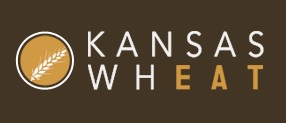The three-day average yield for the fields that were calculated was 46.5 bushels per acre. While an estimated 7.5 million acres of wheat were planted in the fall, the Kansas wheat crop varies in condition based on amount of moisture received. What Mother Nature has in store for the wheat crop still remains to be seen, but the tour captures a moment in time for the yield potential for fields across the state.
The official tour projection for total production of wheat to be harvested in Kansas is 290.4 million bushels. This number is the average of estimated predictions from tour participants who gathered information from 449 fields across the state. Based on May 1 conditions, NASS predicted the crop to be slightly lower at 267.9 million bushels, with a yield of 38 bushels per acre.
These fields are still two to four weeks from harvest. A lot can happen during that time to affect final yields and production.
Dr. Romulo Lollato, K-State Wheat and Forages Extension Specialist, reminded tour participants that the yield number is based on the potential that the crop has as of now, if things go well from now until harvest.
“It’s where we could get,” he said. If Kansas gets cool and wet weather during grain fill, it has the potential to reach that yield. However, there are still many things that could go wrong before that wheat makes it into the bin. He said he believes the 46.5 yield is on the high end.
“Variability is the name of the game this year,” Lollato said, recapping what tour participants saw this year: freeze damage, drought stress and stripe rust coming on after it was too late to spray fungicide.
The tour is sponsored by the Wheat Quality Council, which is a coordinated effort by breeders, producers and processors to improve wheat and flour quality. Dave Green, executive director of the WQC, said there are several goals of the tour. The first is for participants to make connections within the wheat industry. Another is to “describe the wheat as well as we can at the current point in time, not knowing what will happen over the next few weeks.” A third goal is to highlight the agriculture industry.



